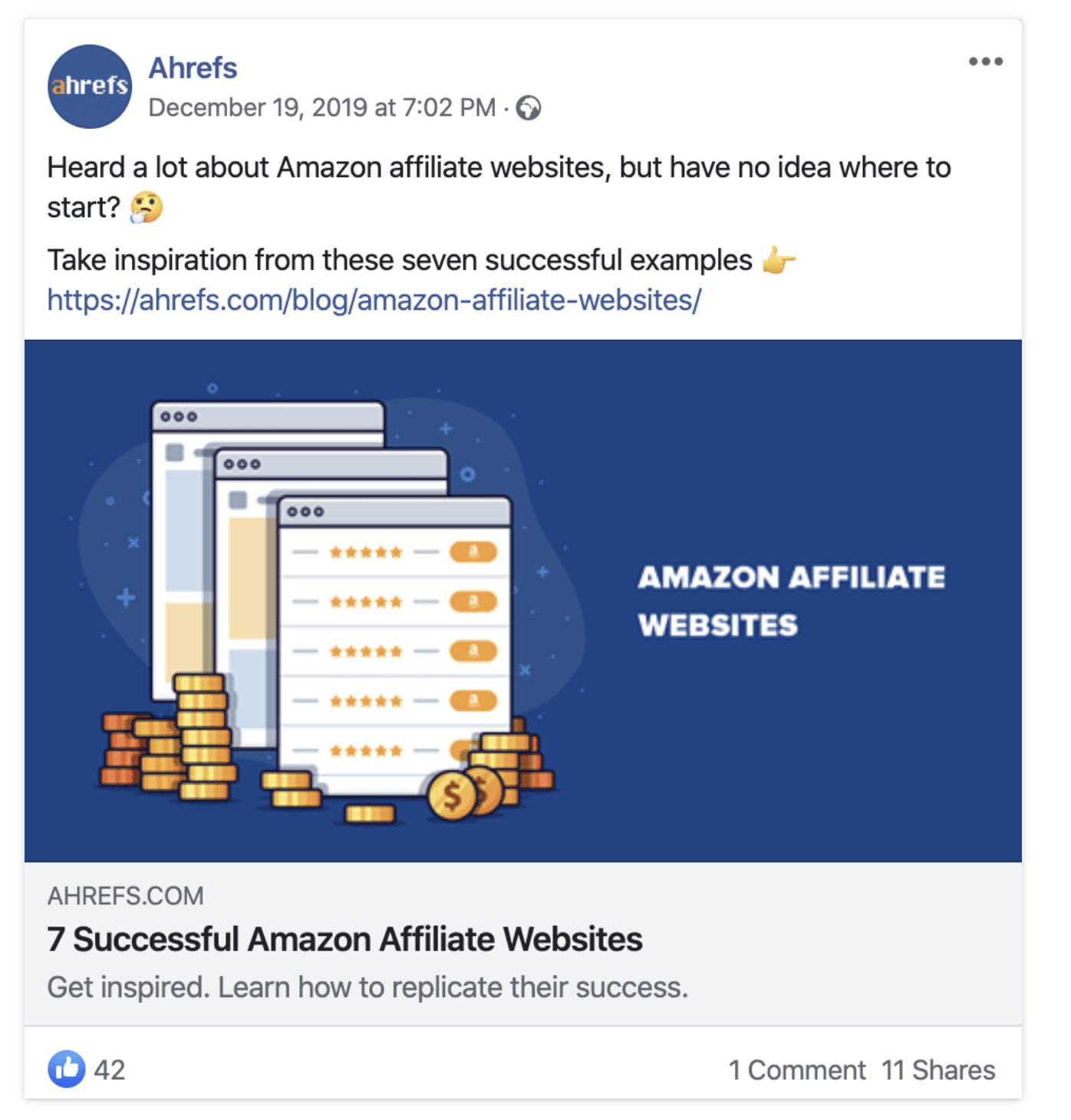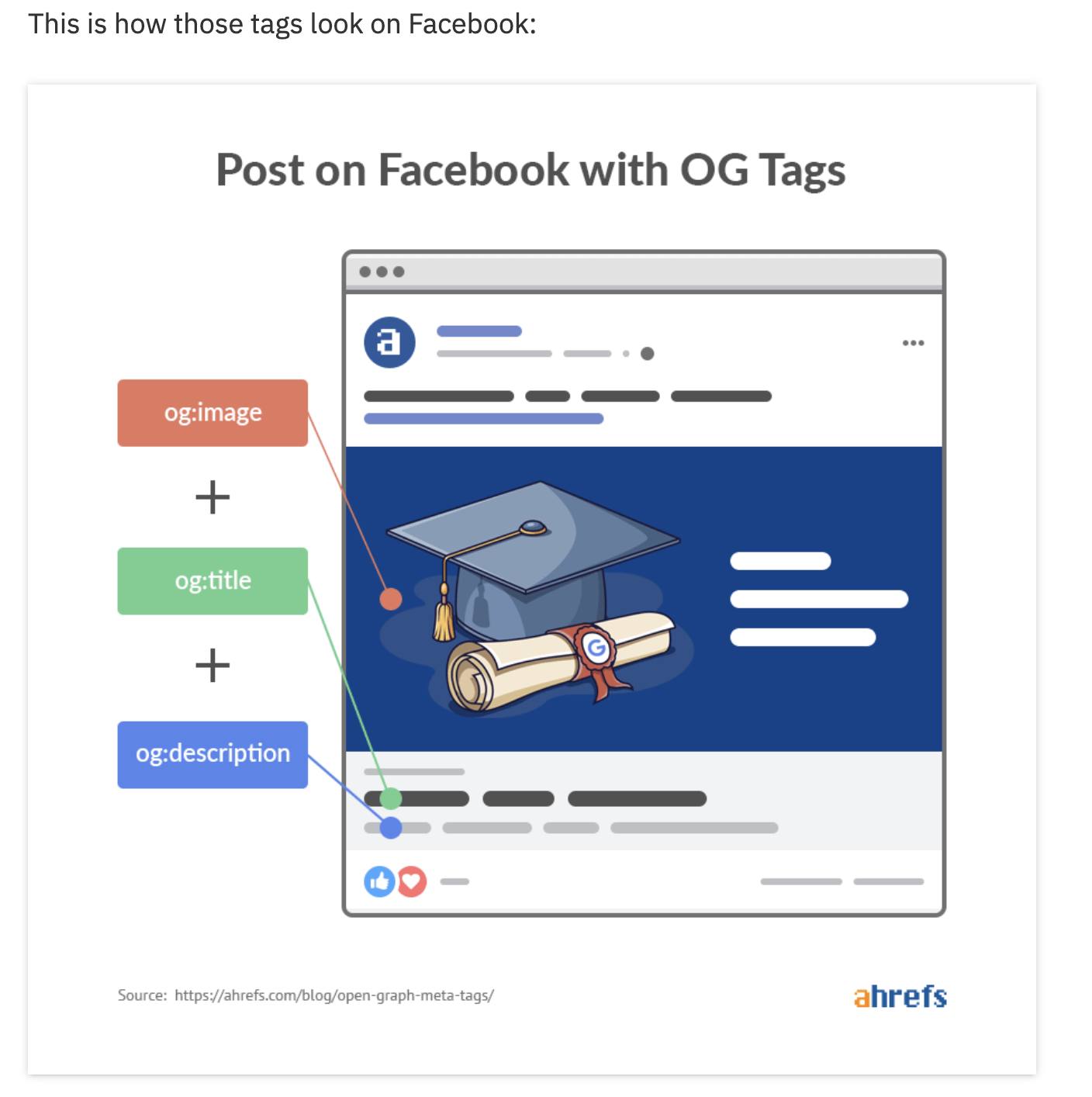Open Graph Tags
Open Graph Tags act as the virtual business cards for your website, allowing it to make a stellar first impression when shared on social media platforms. They offer a sneak peek of your content, ensuring it stands out and draws attention.
What are Open Graph Tags?
Think of Open Graph Tags as the concierge of your online presence, presenting the best of your content in a polished, inviting manner whenever it’s shared on social media. Initiated by Facebook, these tags allow you to control how your content appears on social platforms, optimizing the title, description, image, and more.
Why are Open Graph Tags Crucial?
Without Open Graph Tags, social media platforms decide how to display your shared content, which might not always align with your intentions or branding. These tags empower you to present your content most engagingly, improving click-through rates and the overall user experience. It’s about crafting a visually appealing and informative preview that entices users to click and explore further.
Exploring Open Graph Tags in Action
When someone shares a link from your site on a social media platform, Open Graph Tags dictate how the shared content is displayed, ensuring consistency and coherence in its presentation. It provides a preview with a title, description, and image, offering a glimpse of what the content entails, thus sparking curiosity and engagement.
Here is an example:

Which Open Graph Tags Should You Use?
While Facebook documents numerous Open Graph tags, the fundamental ones ensuring optimal representation of your page are as follows:
- og:title
Syntax: <meta property="og:title" content="Title of Your Page" />
Best Practices: Keep it accurate, valuable, and clickable, with around 40–60 characters. - og:url
Syntax: <meta property="og:url" content="https://yourwebsite.com/your-page/" />
Best Practices: Use the canonical URL to consolidate connected data. - og:image
Syntax: <meta property="og:image" content="https://yourwebsite.com/your-image.jpg" />
Best Practices: Use custom images with a 1.91:1 ratio and minimum dimensions of 1200x630. - og:type
Syntax: <meta property="og:type" content="article" />
Best Practices: Use ‘article’ for articles and ‘website’ for other pages. - og:description
Syntax: <meta property="og:description" content="Description of Your Page" />
Best Practices: Keep it concise and complementary to the title, copying meta description where appropriate. - og:locale
Syntax: <meta property="og:locale" content="en_GB" />
Here is an example breakdown:

Implementing Open Graph Tags: Steps for Optimal Presentation
- Identify the Elements: Determine the title, description, image, and URL you want to display.
- Insert the Tags: Embed the Open Graph Tags in your HTML document's <head> section.
- Test the Implementation: Utilize online tools like the Facebook Debugger or LinkedIn Post Inspector to verify that the tags are working as intended.
Do's and Don'ts For Open Graph Tags
✅ Do's:- Be Precise and Clear: Use clear and concise titles and descriptions.
- Use High-Quality Images: Opt for clear, relevant, high-quality images to represent your content.
- Regularly Update: Ensure your tags are current and accurately represent your content.
- Neglect Testing: Avoid overlooking testing; confirming that your tags render correctly is crucial.
- Ignore Image Dimensions: Using correct image sizes can lead to a better representation of your content.
- Overlook Content Relevance: Don’t use misleading titles, descriptions, or images; maintain relevance to the content.
Conclusion
Open Graph Tags are the architects of first impressions for the content shared on social media, ensuring every share is an invitation, polished, and perfected to your specifications. Implementing these tags is an investment in elevating the appeal of your content on social platforms, promising increased engagement and visibility.
